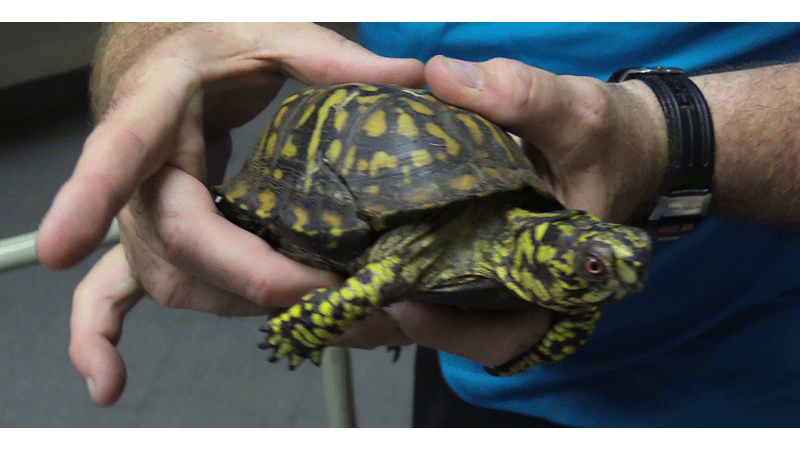JPK families safely meet Virginia Living Museum wildlife
Published 4:58 pm Friday, November 11, 2022
|
Getting your Trinity Audio player ready...
|
What do a millipede, a Fowler’s toad, a mole kingsnake named Guacamole, and a box turtle named Chip have in common? They were featured in the Science Night for J.P. King Jr. Middle School students and their parents Sept. 27 in the cafeteria.
A Franklin City Public Schools news release stated that Tyron Riddick, who directs the FCPS Family Engagement Office, organized the event, which included a pizza dinner before the main attraction.
Just as the S.P. Morton Ponies were curious about their visiting critters the day before, so too were the JPK Mustangs about their night’s guest stars. On arrival, the students watched as Virginia Living Museum representative Bo Baker wheeled in four covered crates, each containing a creature the children and adults had likely never seen or ever really noticed.
Baker first brought out the millipede and walked around, showing it to everyone. This particular Diplopoda (its scientific name) does not actually have 1,000 legs as its common name implies but closer to 200 to 400 legs. Dead leaves are its food of choice, and it has little fear of predators, because it can be sickening if eaten. People are cautioned not to pick up a millipede because it has a toxin that irritates the skin. Plus, these creatures reportedly can smell as if they’ve never taken a bath. Ick.
Carried about, the Fowler’s toad seemed comfortable in its aquarium, as children peered as close as they could. Baker explained that this animal also has a skin coating that makes its predators cough it up pretty darn quick. Curious dogs and cats that get close for a taste also risk illness.
During his presentation, Baker took questions from the audience. Sybaris Pope, a sixth grader, was quick to ask several of them. He said math is his favorite subject, followed by science.
Lorenzo Shearin, a classmate who sat close by, said he likes programs such as this one and wants more.
Slithering about on the speaker’s hands and arms was Guacamole the mole kingsnake. As with the other two animals, it was “look, but don’t touch.” Baker emphasized to everyone to refrain from interfering with wildlife so as to avoid hurting them and getting injured at the same time. The snake, which is nonvenomous, can be found in agricultural fields or abandoned property and preys on frogs, lizards and rodents. Other people in the audience were wary as it was brought closer to them.
Kavion Long, a fifth grader who came over to see the program, said he was OK with the snake, and seventh-grader Tristan Tomlin did not seem to flinch when it came around to her.
Finally, everyone met Chip, who got his nickname after surviving being damaged in a car accident. This box turtle, estimated at 32 years old, can be a long-lived critter — 70 to 100 years old. Baker pointed out that the turtle and its shell are as one; there’s no separation. While Chip and his kind can be adorable looking, they don’t care to be picked up and played with like a toy. To show how relatively fast Chip can move, he was placed on a towel on the floor. The youngsters gathered around, and the quieter they became the more comfortable Chip was with moving about as fast as he could.
Afterward, Anna and Daniel Henry, seventh and fourth graders, respectively, went with their father to get another look at Chip. Anna said the program was fun, and Daniel also liked it a lot.
Be on the lookout for future Family Engagement programs this school year.









